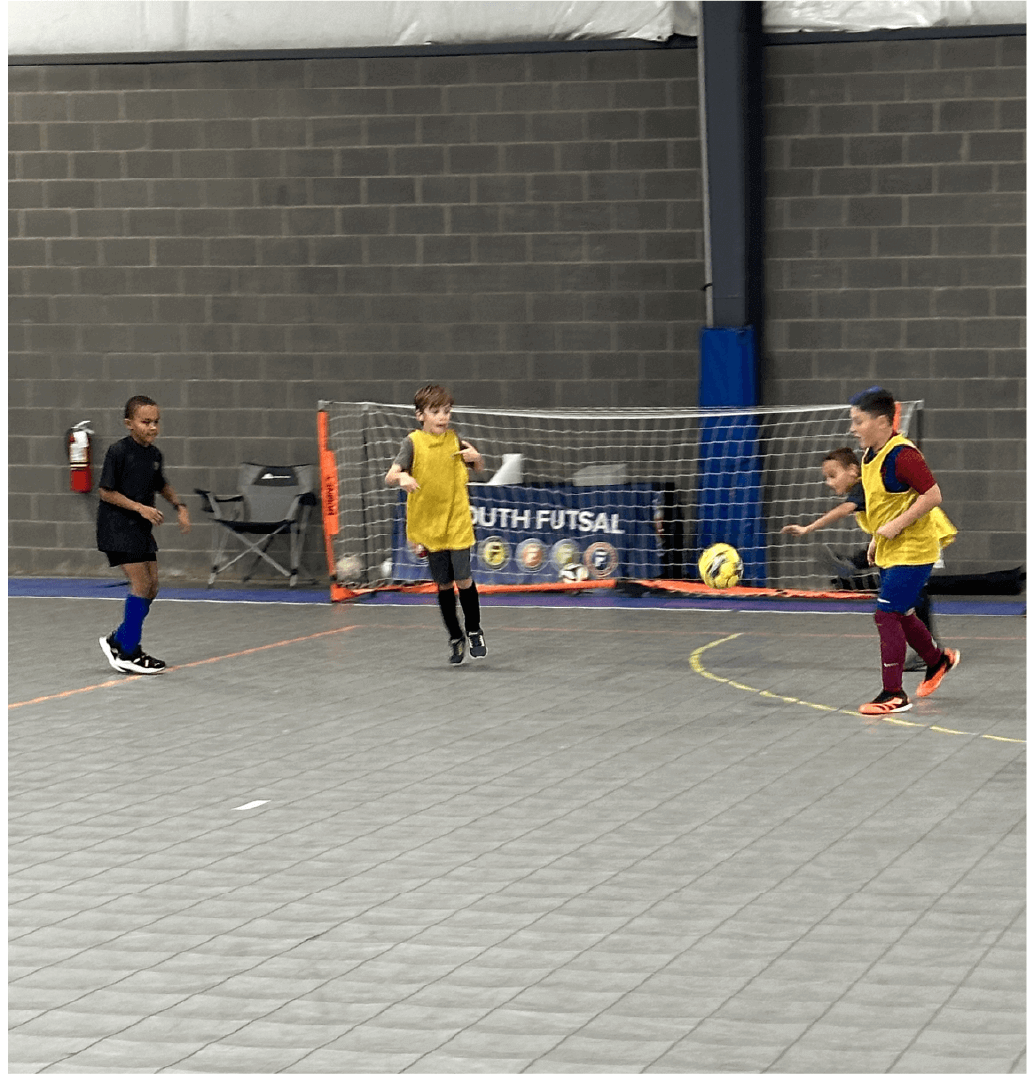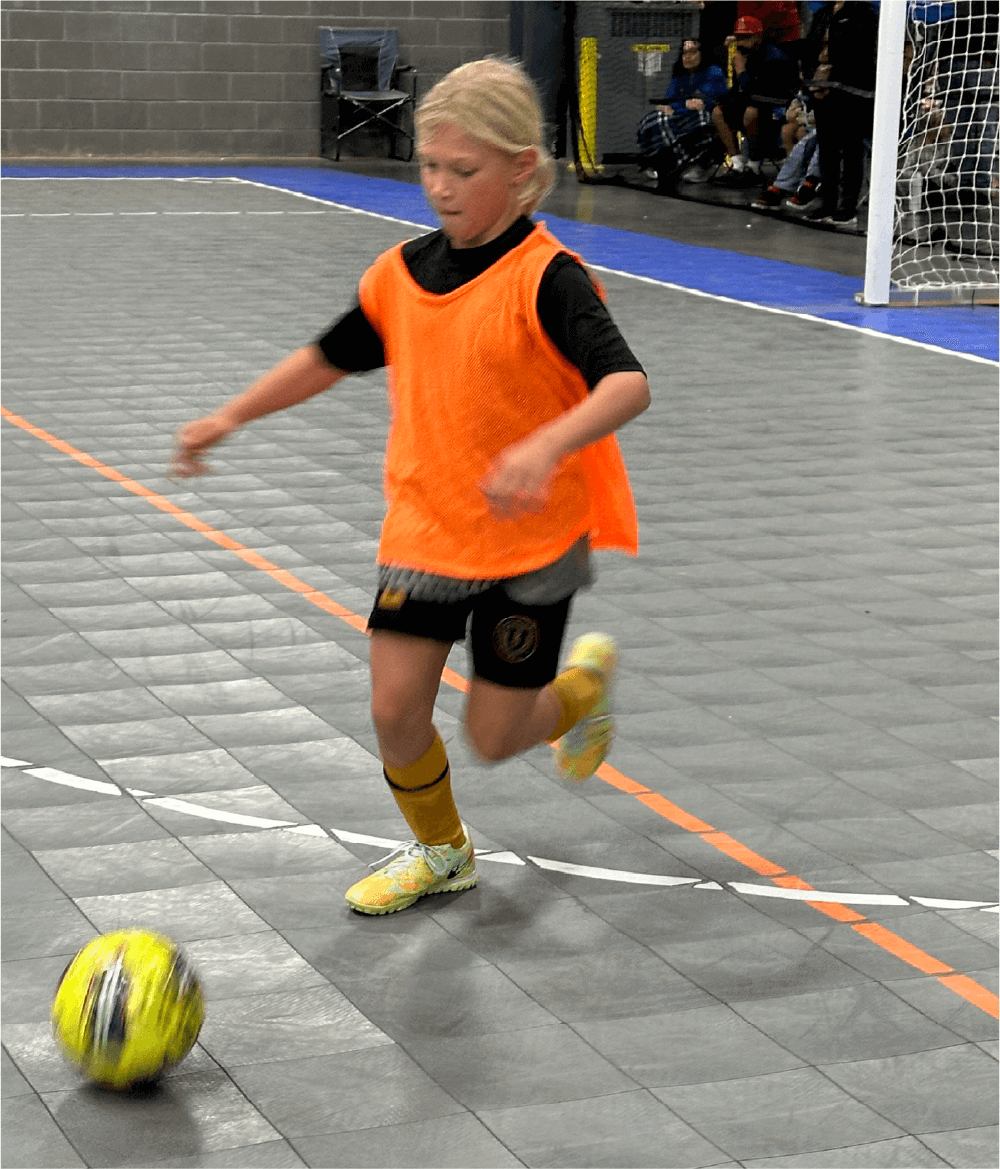CRFC
NEWSLETTERS
NEWSLETTERS FOR OUR LATEST EVENTS
Winter is the perfect season for kids to participate in indoor futsal, a fast-paced and exciting sport that improves agility, decision-making, and teamwork. However, playing indoors during winter has safety considerations that parents, coaches, and young players should know. Below are easy-to-follow guidelines to ensure the safety and well-being of U5 to U15 players while they enjoy the game.

1. Check the Indoor Facility for Safety
Ensuring the facility is safe is the first step in protecting young players. Here’s what to look for:
Smooth, Clean Floors
The playing surface should be in good condition. Inspect for cracks, wet spots, or any uneven areas that could cause tripping or slipping. Regular cleaning and maintenance are essential to keep the surface safe and ready for play.
Good Ventilation
Indoor futsal facilities must be well-ventilated to provide fresh air. Proper ventilation prevents the area from becoming too warm or stuffy, which can affect players’ comfort and stamina.
Adequate Lighting
The court should have bright and consistent lighting so players can see clearly. Poor lighting can lead to accidents as players might not notice hazards or may collide with each other.
Emergency Exits and First Aid
Ensure everyone is familiar with the location of emergency exits and first aid kits. Quick access to these essentials can make a huge difference in an injury or unexpected situation.

2. Wear the Right Gear for Safety
Having the right equipment is critical to prevent injuries and ensure kids play safely:
Indoor Soccer Shoes
Indoor futsal shoes are different from outdoor cleats. They have non-slip rubber soles that provide a better grip on indoor surfaces. Wearing the wrong type of footwear can increase the risk of slipping and falling.
Comfortable Clothing
Lightweight, moisture-wicking clothing is best for indoor play. It helps players stay cool and prevents overheating. Goalkeepers should wear padded clothing for extra protection when diving for the ball.
Shin Guards
No matter the age group, shin guards are a must to protect the legs from accidental kicks or falls. Ensure they fit snugly and don’t shift during play.
Safety Accessories
Avoid wearing jewelry, watches, or any accessories that could pose a safety risk. Long hair should be tied back to prevent it from obstructing vision or getting in the way during play.
3. Warm Up Before Every Game
Warming up is essential, especially in the colder months when muscles can be tight and more prone to injury:
Dynamic Stretches
Encourage players to do dynamic stretches, such as leg swings, arm circles, and gentle lunges. These activities help increase blood flow and prepare muscles for more intense activity.
Light Jogging and Drills
A short period of jogging or basic ball-handling drills helps kids get used to moving quickly. This part of the warm-up also reduces the risk of muscle strains.
Hydration
Staying hydrated is important even during winter. Provide water breaks before and during the game to energize players and prevent fatigue.


4. Follow the Rules of the Game for a Safe Environment
Rules ensure fair play and maintain safety:
Respectful Play
Teach kids to play respectfully and avoid aggressive behavior. Remind them that pushing, shoving, or tripping opponents can lead to serious injuries and spoil the game’s fun.
Maintain Safe Distances
Emphasize keeping safe distances, especially during set plays like free kicks or goal kicks. Opposing players should be at least 10 feet away from the ball during these moments to prevent collisions.

5. Be Aware of Surroundings and Other Players
Staying alert and paying attention to surroundings can prevent unnecessary accidents:
Watch for Teammates and Opponents
Ensure players know each other’s movements to avoid bumping into one another. Clear communication, such as calling for the ball or shouting warnings, can help keep everyone safe.
Use Equipment Properly
Ensure kids don’t misuse equipment or play near potentially dangerous areas, such as goalposts or walls. Goalposts should be securely anchored and padded if necessary.

6. Ensure Supervision by Coaches and Parents
Having responsible adults oversee the game ensures that kids stay safe:
Coach Supervision
Coaches should be present at all times to guide players and enforce safety rules. They should also be trained in basic first aid to respond quickly if an injury occurs.
Parental Involvement
Parents should stay involved by making sure their children have the right equipment and follow safety instructions. Parents can also offer support by reminding their kids to stay hydrated and rest when needed.
7. Adjusting to Cold Weather Before and After Play
Indoor play during winter means kids are often transitioning from cold outdoor temperatures to warm indoor conditions:
Warm Jackets and Gear
Kids should wear warm jackets or sweatshirts before starting to play. This helps prevent sudden temperature changes that can lead to muscle strain.
Cool Down Gradually
After the game, players should cool down gradually. Doing some light stretching and putting on a jacket or sweatshirt helps the body adjust to cooler temperatures outside the facility.


8. Prepare for Emergencies
While injuries can’t always be prevented, being prepared can make a big difference:
First Aid Kit
Make sure there’s an easily accessible first aid kit at the facility. Coaches and parents should know how to use it and respond in case of minor injuries.
Emergency Contacts
Keep a list of emergency contact numbers for all players. This ensures quick communication if a player needs medical attention or help.

